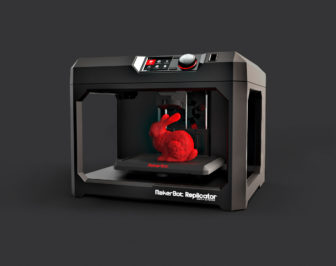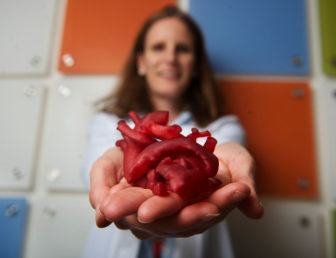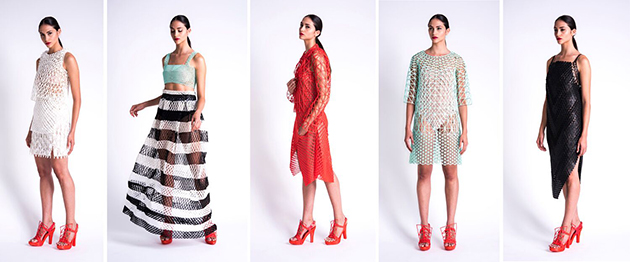I was watching a TED talk where fashion designer Danit Peleg was talking about and showing her three-dimensional (3D) printed pieces. This got me thinking about how amazing 3D printing is and how it already has numerous uses — and we haven’t even scratched the surface as far as the possibilities.
When I first heard about 3D printing, my initial thought was how cool it was that by using special paper, an object could be printed to resemble one manufactured by traditional means. I found out quickly that 3D printing was more than that. The technology allows us to print virtually anything. I learned that 3D printers create a three-dimensional object by building it layer by successive layer, until the entire object is complete. It’s much like printing in two dimensions on a sheet of paper, but with an added third dimension

I began to see 3D printing everywhere, and before long started to hear about its uses in medicine. For example, researchers at MIT and Boston Children’s Hospital use 3D printed models of patient’s hearts so that surgeons can see and feel the organ prior to performing a procedure. Recently, select surgeons at Children’s started practicing procedures on 3D-printed vasculature. The surgeons found that the preparation considerably cut some surgery times, making them much safer for the young patients.
Three-dimensional printing is also used to create artificial limbs that are just as durable as those made using traditional methods but take less time to create and cost less. In addition to the durability, 3D printing allows one the freedom to design products pretty much any way that they want, which is extremely helpful when a perfect fit is needed. I recently saw a video of actor Robert Downey Jr. bringing a young “Iron Man” fan a prosthetic 3D-printed arm that was a replica of the Marvel hero’s one, complete with lights. The need for a perfect fit was one reason for the 3D printed arm; the other is that the lower cost allows the creator to donate prosthetic limbs to children around the world.

Three-dimensional printing can lead to great breakthroughs in the world of medicine. For example, Utkan Demirci, a biomedical engineer at Harvard University Medical School and Brigham and Women’s Hospital, is printing ovarian cancer cells onto a gel in a lab dish where the cells could be grown and studied. This approach could enable scientists to study the tumor cells in a more systematic environment and use them to test drugs. Another study at Heriot-Watt University in Edinburgh, Scotland, involves printing uniform-size droplets of cells gently enough to keep them alive and maintain their ability to develop into different cell types. The new printing method could be used to make 3D human tissues for testing new drugs, growing organs, or ultimately printing cells directly inside the body. This could eliminate the need to extract embryonic stem cells from humans, and could lead to treatments or cures for such things as spinal cord injuries, heart disease, Parkinson’s disease, ALS / Lou Gehrig’s disease, Alzheimer’s, and organ failure.

Skier Amanda Boxtel was involved in a freak skiing accident in 1992 that left her paralyzed from the waist down. Amanda, who was told that she would never walk again, is able to thanks to a 3D-printed robotic exoskeleton suit developed by 3D systems and EksoBionics. Because of Amanda’s paralysis, she is unable to feel if the suit is causing too much pressure, which can cause bruising and other injuries. Three-dimensional printing allows the suit to perfectly fit Amanda’s body, eliminating the potential for injuries. The suit is now being fitted to others who have suffered paralysis.
Of course, there are many non-medical uses for 3D printed as well as some that are just fun.
Components such as car parts, crime scene reconstruction, art, action figures, home décor, and jewelry are just some of the uses for 3D printing. During the holidays, Cox Communications ran a commercial advertising their Gigablast service that featured 3D printed objects, including a holiday dinner.

The world of 3D printing is moving forward at a very fast pace and I am hearing about new uses for the technology all the time. Three-dimensional printing can be both fun and life-changing and is definitely something that is – and will continue to – make our world a better place
⇒Click here to check out Forward Focus archives.
 Forward Focus explores how entrepreneurship, innovation and ideas are changing the way we see and do things and how they can move us and our communities forward.
Forward Focus explores how entrepreneurship, innovation and ideas are changing the way we see and do things and how they can move us and our communities forward.
The author, Brian Chicoine, is a New Hampshire native who merges his passion for entrepreneurship and innovation with his love of new and bold ideas to bring the reader a fresh perspective on the way things are done. Brian writes from the perspective that nothing is impossible and loves to ask “why not” and “what box?”
Brian was born in Nashua and was raised in Raymond and Manchester. A couple years after graduating from West High School, Brian attended college in Manchester. Brian loves the ocean and wanted to experience life in a Southern New England city so moved to Providence to complete his undergraduate degree. After graduation, Brian and his new wife Jackie lived in Manchester for about five years and had two sons. Brian and his family then returned to Jackie’s home state of Rhode Island.
Brian and Jackie live in Providence where they are raising their two “no box thinkers and doers” and are building a multi-venture company.
 You’re one click away! Sign up for our free eNewsletter and never miss another thing.
You’re one click away! Sign up for our free eNewsletter and never miss another thing.








